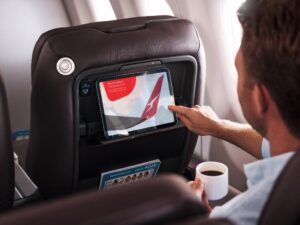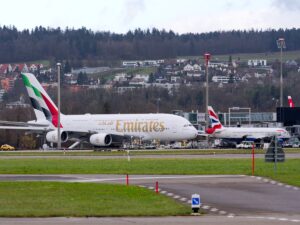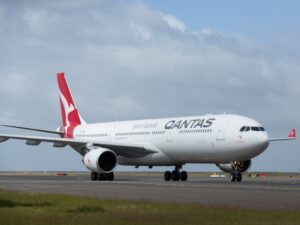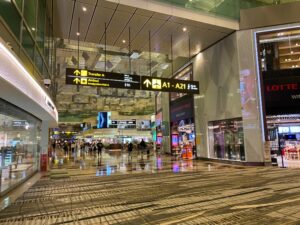
Qantas may call itself the national carrier, but Singapore Airlines actually has more international flights departing from Australia each day than Qantas at the moment. This has been the case for most of the past two years.
By our count, Qantas has 97 international flights departing Australia this week. That’s an average of just under 14 international flights per day.
By comparison, Singapore Airlines has 102 flights departing Australia this week – an average of more than 14 per day. All of them are bound for Singapore, where passengers can seamlessly connect onwards to destinations across Asia, Europe, the Middle East, South Africa or North America.
Most Singapore Airlines flights from Australia are on large wide-body aircraft, except for the recently relaunched Boeing 737 flights from Darwin and Cairns to Singapore.
Current Qantas & Singapore Airlines international routes from Australia
Here’s a full list of Qantas international routes departing Australia this week:
| Origin | Destination | Flights per week |
| Sydney/Darwin | London | 7 |
| Sydney | Dallas/Fort Worth | 5 |
| Melbourne/Darwin | London | 7 |
| Sydney | Los Angeles | 7 |
| Brisbane | Los Angeles | 5 |
| Melbourne | Los Angeles | 8 |
| Sydney | Manila | 7 |
| Sydney | Bangkok | 4 |
| Melbourne | Singapore | 4 |
| Sydney | Singapore | 6 |
| Brisbane | Singapore | 3 |
| Perth | Singapore | 3 |
| Sydney | Johannesburg | 4 |
| Melbourne/Adelaide | Delhi | 5 |
| Sydney | Vancouver | 3 |
| Sydney | Nadi | 4 |
| Sydney | Honolulu | 5 |
| Sydney | Auckland | 7 |
| Darwin | Dili | 3 |
And here’s a full list of Singapore Airlines international departures from Australia this week:
| Origin | Destination | Flights per week |
| Sydney | Singapore | 28 |
| Melbourne | Singapore | 21 |
| Brisbane | Singapore | 21 |
| Perth | Singapore | 21 |
| Adelaide | Singapore | 5 |
| Darwin | Singapore | 3 |
| Cairns | Singapore | 3 |
Singapore Airlines is also carrying more international passengers than Qantas
It’s been a similar story ever since Qantas started resuming international flights in November 2021. During that first month of Australia’s partial international border reopening, Qantas had 20,197 seats available on international flights to and from Australia and carried 10,941 passengers on those flights. In the same month (November 2021), Singapore Airlines offered a total of 172,842 seats to/from Australia and carried 31,766 passengers.
Singapore Airlines did have a significantly lower average seat factor than Qantas in November 2021, but this would have been because Singapore Airlines was also operating flights into airports like Perth and Brisbane which were still subject to low international arrival caps. Qantas did not operate any such flights as they are unprofitable.
In December 2021, Singapore Airlines carried 61,272 passengers to/from Australia, across more flights, compared to 50,068 passengers on Qantas.
The most recent month for which detailed BITRE international airline activity data is available is January 2022. In that month, Qantas had 124,952 seats available on international flights and carried 74,027 passengers. Singapore Airlines had 192,354 seats available and carried 76,983 passengers to/from Australia.
Qantas will soon have more international flights again
This equation will change from 13 April 2022, when Qantas reinstates additional trans-Tasman flights in response to New Zealand reopening its border to Australia citizens. In addition to the existing daily Sydney-Auckland service, Qantas will add daily Sydney-Christchurch, Melbourne-Auckland and Brisbane-Auckland flights from 13 April.
But for now at least, Singapore Airlines continues to provide more international services in and out of Australia than Qantas.
Singapore Airlines was also one of around two dozen international airlines that maintained reliable passenger services to Australia throughout the pandemic, even when other airlines including Qantas stopped selling commercial international flights.
You can leave a comment or discuss this topic on the Australian Frequent Flyer forum.

















































































Community Comments
Loading new replies...
Join the full discussion at the Australian Frequent Flyer →